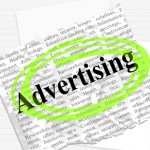When my sales representative at KIFM-FM 98.1 radio, invited me to the Cracking The Code, the Science of Connecting with Consumers San Diego Radio Broadcaster’s Association event held at the Hilton San Diego Bayfront in March 2011, I was happy to accept.
With so many changes in media these days, I was curious to see how a traditional medium is handling the upheaval. Maybe not surprisingly, the best answer might be to stay true to your original creation.
“A longer format message like the traditional sixty-second radio commercial can tell a story that makes the listener want to stay tuned,” according to Rich Badami of Badami & Associates–a creative agency. “You can’t hold them as well with a shorter length format.”
The keynote speaker at the event, Dan Hill, P.h.D, and Founder & CEO of Sensory Logic, Inc. demonstrated a sixty-second radio ad. It featured a married couple having an intimate “how was your day” discussion while the wife spoke to the husband as she was taking a shower–the sound of the water crackling in the background. The ad was effective, in that it told a story in sixty seconds and catered to the listener’s emotions according to Hill who is able to track listener’s emotional responses to ads.
He showed us a graph that marked when the listeners responded most favorably to the ad and when they started losing interest. Maybe not surprisingly, those graphs seemed to show on further playing of other radio ads, that listeners tended to start tuning out after an announcer came on. For example when a car dealer or drug company started listing facts in ramped up speaking voices that they needed to cram in for legal reasons, generally the listeners flat-lined in their emotional responses.
It’s no wonder that Dan Hill spoke about appealing to consumer’s emotions. As the author of Emotionomics: Leveraging Emotions for Business Success, most of his career has been spent studying how people’s emotions affect responses. Hill said that his studies show that the subconscious mind rules 98% of people’s thought activity and that studies have shown that our emotional brain has ten times as much data as our rational brain. He also said that his studies have proven an emotional ad campaign is usually at least two times as profitable as a rational approach.
Here are some points Hill presented that I feel compelled to share with you. Some of these “truths” can be applied to other advertising mediums.
1. The most powerful radio ads are when companies are honest and being themselves.
2. Radio advertising creation is a combination of gut and instinct.
3. Our brains think in images not words. A quarter of our brain processes visuals. How can you create pictures with words in your ads?
4. Radio advertisers have three seconds to grab a customer’s attention otherwise they’ve lost them. How can you get your customer’s focus and have them stay with you?
5. Fear is the most powerful, under-leveraged emotion that advertisers use. To be effective with this emotion, listeners must be able to feel the problem.
6. Include your most important part of your message in the body of your commercial, before the end when listeners tend to start tuning out.
7. Create a contrast in your ad like initially presenting pain then showing the ideal state and finally the resolution.
8. The new P’s are Passion, Purpose and Personality.
9. Customers are turned off by the corporate voice over. They feel like they’re being sold to.
10. Stay away from leading with discount pricing. Discount pricing seems desperate and it does not establish value before the price.



